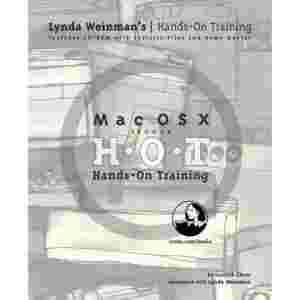Mac OS X Hands-On Training
Garrick Chow
Mac OS X 10.2 (Jaguar) H.O.T. gets you up-to-speed on Mac OS X 10.2 and hands-on with all of its popular i-apps!
* Project-based, step-by-step instructions based on lynda's classroom-tested tutorials make learning a snap.
* Provides both operating system basics and detailed instructions for Mac OS X 10.2's bundled i-applications.
* Companion CD contains not just project files, but music, photos, and video clips as well as plug-ins to use with the applications.
Increasingly, users are viewing their computers as not just a work or educational tool, but as windows into an ever-expanding digital universe. Nowhere is this shift more apparent than with Apple's new operating system: Mac OS X 10.2, also known as Jaguar. Included with the operating system are applications for instant messaging, working with photos and music, burning CD's, watching DVD's, cruising the Web, and more. However, it's difficult to use any of these great tools effectively if you don't understand how to work with the operating system itself.
Enter Mac OS X Hands-On Training. In these pages, veteran author and trainer Garrick Chow tackles first the operating system, then its digital goodies--all in the friendly, hands-on style that has become the hallmark of this popular tutorial-based series based on the classroom-tested training courses at lynda. Chow devotes the first sections of the book to grounding readers in the skills they'll need to use the OS. Then, once readers are Mac OS X fluent, the volume goes on to provide detailed coverage of each of the system's bundled "digital hub" applications: iTunes, iPhoto, iMovie, iDVD, iTools, and iChat. Along the way, readers will find plenty of tips and tricks that illustrate not just how to use the applications, but how to use them creatively.
Autor: Garrick Chow
Wydawnictwo: Peachpit Pres
Wydanie: 2003
Język: angielski
Stron: 838
Okładka: miękka
ISBN: 032[zasłonięte]0992
Stan: bardzo dobry, książka nie używana
Cena detaliczna: € 33,15 Nasza cena: 19,95 zł
Nasze książki są nowe, jednak niektóre z nich to tzw. "końcówki nakładów", dlatego mogą zdarzyć się egzemplarze z minimalnymi uszkodzeniami (zwykle ledwie widoczne zgniecenia lub zarysowania okładek powstałe tytułem transportu i magazynowania). 
